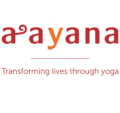The Nature of Yin Yoga Poses
The repertoire of Yin Yoga, when compared to more dynamic yoga styles, is intentionally compact. It is generally accepted that there are about twenty core postures (asanas). This deliberate limitation is not a shortcoming but a fundamental aspect of the practice’s philosophy. The goal is not to master a vast sequence of complex poses, but to dive deep into a select few. The true depth and variety come from the multitude of variations and the strategic use of props (such as blocks, bolsters, straps, and blankets) that modify each posture to fit the unique anatomy and needs of every individual practitioner. A single pose can be adapted to be restorative, moderate, or intense, making the practice accessible to everyone, from absolute beginners to advanced yogis.
The Core Principle: Targeting the Deep Tissues
The principle of Yin Yoga is distinct from Yang practices (like Vinyasa or Hatha) which primarily focus on muscular engagement, strength, and cardiovascular endurance. Instead, Yin Yoga aims to access the deeper, often neglected, connective tissues of the body: the fascia, ligaments, tendons, and joint capsules.
This is achieved through two key mechanics:
- Long Hold Times: Poses are held passively for an extended duration, typically 3 to 5 minutes, and sometimes even up to 10 or 20 minutes in advanced practices. This sustained, gentle tension allows the dense connective tissues to be safely stressed and lengthened, much like gently stretching a piece of leather.
- Muscle Release: To effectively target these deep layers, the surrounding muscles must be relaxed. If the muscles are engaged, they protect the joints and absorb the stretch. In Yin, we surrender muscular effort, allowing the stretch to sink into the deeper structures.
This process promotes mobility, lubrication, and resilience in the joints and improves the health of the fascial network throughout the body.
In Summary: A Finite List with Infinite Possibilities
- Number of Main Poses: We can consider that there are approximately 15 to 20 fundamental base poses that form the foundation of all Yin Yoga sequences.
- Happy Baby Pose (Ananda Balasana)
- Seal Pose
- Supported Sacrum (with a block)
- Toes stretch
- Sphinx Pose
- Butterfly Pose (Badhakonasana)
- Twisted Roots Pose
- Crescent Pose
- Caterpillar Pose
- Dragon Pose (Low Lunge)
- Shoelace Pose
- Sadle Pose
- Swan Pose
- Snail Pose
- Saddle Pose
- The True Number is Infinite: The immense richness of Yin Yoga lies in its variations and the use of supports. A single base pose, such as Dragon Pose, can be experienced in three or four radically different ways (e.g., Sleeping Dragon, Flying Dragon, Twisting Dragon), each targeting slightly different areas. The emphasis is always on the sensation in your body—finding your “edge”—rather than achieving a perfect external form. This makes the practice a deeply personal and introspective journey.
Important Advice for a Safe Practice
If you are new to Yin Yoga, it is highly recommended to begin your practice under the guidance of a qualified teacher. The subtlety of Yin Yoga resides in the nuanced listening to bodily sensations and the respectful observance of the body’s limits. A teacher can provide crucial guidance on proper alignment and help you distinguish between a beneficial “productive discomfort” and a potentially harmful “sharp pain.” Because the poses target the joints directly, understanding this distinction is essential to avoid stressing the joints incorrectly and to ensure a safe and beneficial practice.
Learn more > About Yin Yoga
